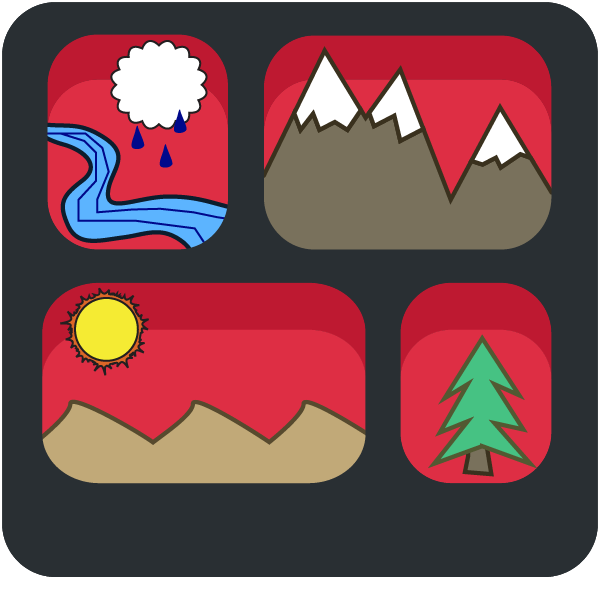Source code for terrainbento.boundary_handlers.capture_node_baselevel_handler
# coding: utf8
# !/usr/env/python
"""
**CaptureNodeBaselevelHandler** implements "external" stream capture.
"""
[docs]class CaptureNodeBaselevelHandler(object):
"""Turn a closed boundary node into an open, lowering, boundary node.
A **CaptureNodeBaselevelHandler** turns a given node into an open boundary
and lowers its elevation over time. This is meant as a simple approach to
model stream capture external to the modeled basin.
Note that **CaptureNodeBaselevelHandler** increments time at the end of the
**run_one_step** method.
"""
[docs] def __init__(
self,
grid,
capture_node=None,
capture_start_time=0,
capture_stop_time=None,
capture_incision_rate=-0.01,
post_capture_incision_rate=None,
**kwargs
):
"""
Parameters
----------
grid : landlab model grid
capture_node : int
Node id of the model grid node that should be captured.
capture_start_time : float, optional
Time at which capture should begin. Default is at onset of model
run.
capture_stop_time : float, optional
Time at which capture ceases. Default is the entire duration of
model run.
capture_incision_rate : float, optional
Rate of capture node elevation change. Units are implied by the
model grids spatial scale and the time units of ``step``. Negative
values mean the outlet lowers. Default value is -0.01.
post_capture_incision_rate : float, optional
Rate of captured node elevation change after capture ceases. Units
are implied by the model grids spatial scale and the time units of
``step``. Negative values mean the outlet lowers. Default value is 0.
Examples
--------
Start by creating a landlab model grid and set its boundary conditions.
>>> from landlab import RasterModelGrid
>>> mg = RasterModelGrid((5, 5))
>>> z = mg.add_zeros("node", "topographic__elevation")
>>> mg.set_closed_boundaries_at_grid_edges(bottom_is_closed=True,
... left_is_closed=True,
... right_is_closed=True,
... top_is_closed=True)
>>> mg.set_watershed_boundary_condition_outlet_id(
... 0, mg.at_node["topographic__elevation"], -9999.)
>>> print(z.reshape(mg.shape))
[[ 0. 0. 0. 0. 0.]
[ 0. 0. 0. 0. 0.]
[ 0. 0. 0. 0. 0.]
[ 0. 0. 0. 0. 0.]
[ 0. 0. 0. 0. 0.]]
Now import the **CaptureNodeBaselevelHandler** and instantiate.
>>> from terrainbento.boundary_handlers import (
... CaptureNodeBaselevelHandler)
>>> bh = CaptureNodeBaselevelHandler(mg,
... capture_node = 3,
... capture_incision_rate = -3.0,
... capture_start_time = 10,
... capture_stop_time = 20,
... post_capture_incision_rate = -0.1)
>>> for _ in range(10):
... bh.run_one_step(1)
The capture has not yet started, so we should expect that the
topography is still all zeros.
>>> print(z.reshape(mg.shape))
[[ 0. 0. 0. 0. 0.]
[ 0. 0. 0. 0. 0.]
[ 0. 0. 0. 0. 0.]
[ 0. 0. 0. 0. 0.]
[ 0. 0. 0. 0. 0.]]
Running forward another 10 time units, we should
see node 3 lower by 30.
>>> for _ in range(10):
... bh.run_one_step(1)
>>> print(z.reshape(mg.shape))
[[ 0. 0. 0. -30. 0.]
[ 0. 0. 0. 0. 0.]
[ 0. 0. 0. 0. 0.]
[ 0. 0. 0. 0. 0.]
[ 0. 0. 0. 0. 0.]]
>>> bh.model_time
20.0
Now that model time has reached 20, lowering will occur at the post-
capture incision rate. The node should lower by 1 to -31 in the next
10 time units.
>>> for _ in range(10):
... bh.run_one_step(1)
>>> print(z.reshape(mg.shape))
[[ 0. 0. 0. -31. 0.]
[ 0. 0. 0. 0. 0.]
[ 0. 0. 0. 0. 0.]
[ 0. 0. 0. 0. 0.]
[ 0. 0. 0. 0. 0.]]
"""
self.model_time = 0.0
self.grid = grid
self.z = grid.at_node["topographic__elevation"]
self.node = capture_node
self.start = capture_start_time
self.rate = capture_incision_rate
if capture_stop_time is None:
self.capture_ends = False
else:
self.capture_ends = True
self.stop = capture_stop_time
if post_capture_incision_rate is None:
self.post_capture_incision_rate = 0
else:
self.post_capture_incision_rate = post_capture_incision_rate
self.grid.status_at_node[self.node] = self.grid.BC_NODE_IS_FIXED_VALUE
[docs] def run_one_step(self, step):
"""Run **CaptureNodeBaselevelHandler** to update captured node
elevation.
The **run_one_step** method provides a consistent interface to update
the terrainbento boundary condition handlers.
In the **run_one_step** routine, the **CaptureNodeBaselevelHandler**
will determine if capture is occuring and change the elevation of the
captured node based on the amount specified in instantiation.
Note that **CaptureNodeBaselevelHandler** increments time at the end of
the **run_one_step** method.
Parameters
----------
step : float
Duration of model time to advance forward.
"""
# lower the correct amount.
if self.model_time >= self.start:
if self.capture_ends:
if self.model_time < self.stop:
self.z[self.node] += self.rate * step
else:
self.z[self.node] += self.post_capture_incision_rate * step
else:
self.z[self.node] += self.rate * step
# increment model time
self.model_time += step
